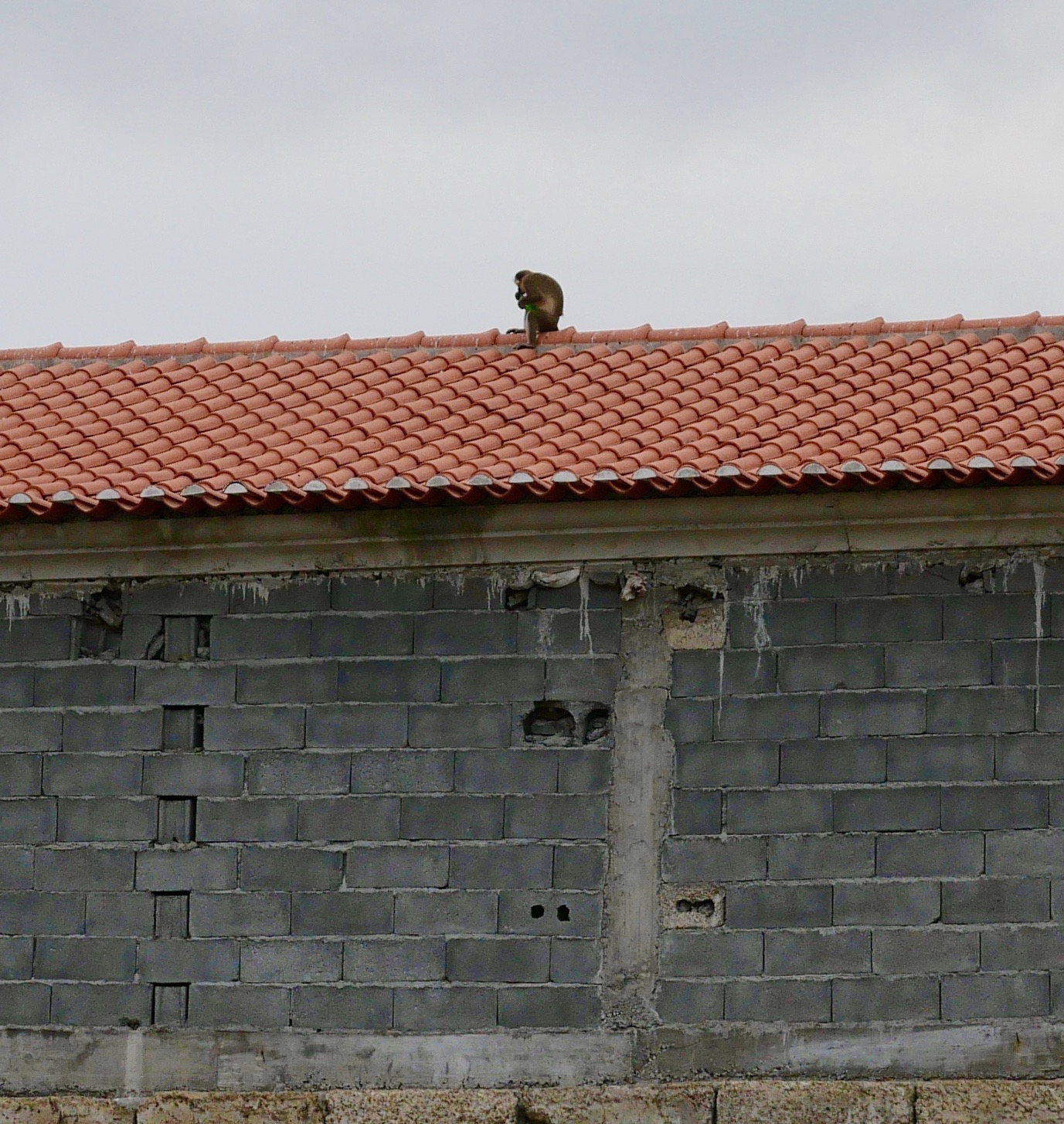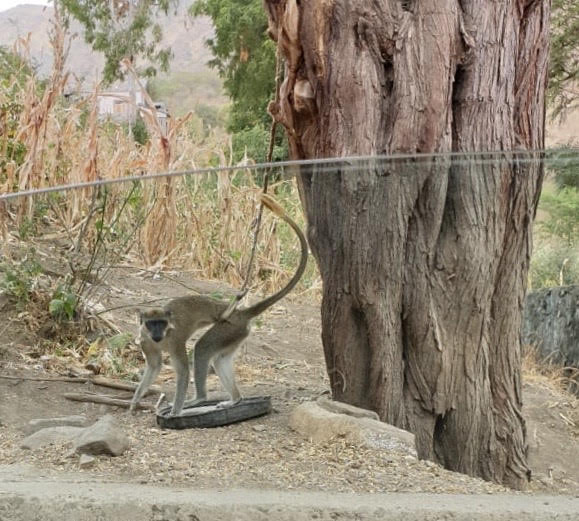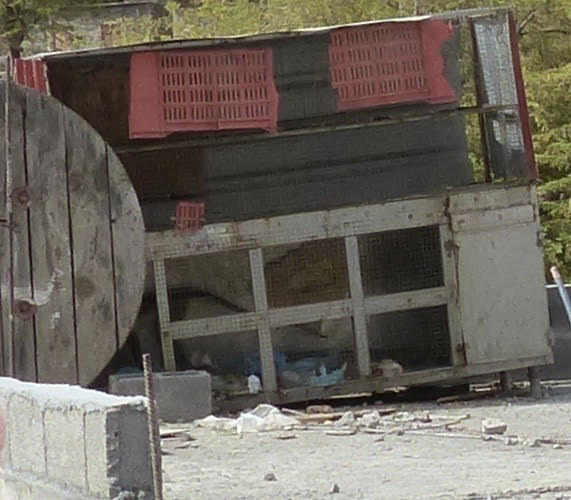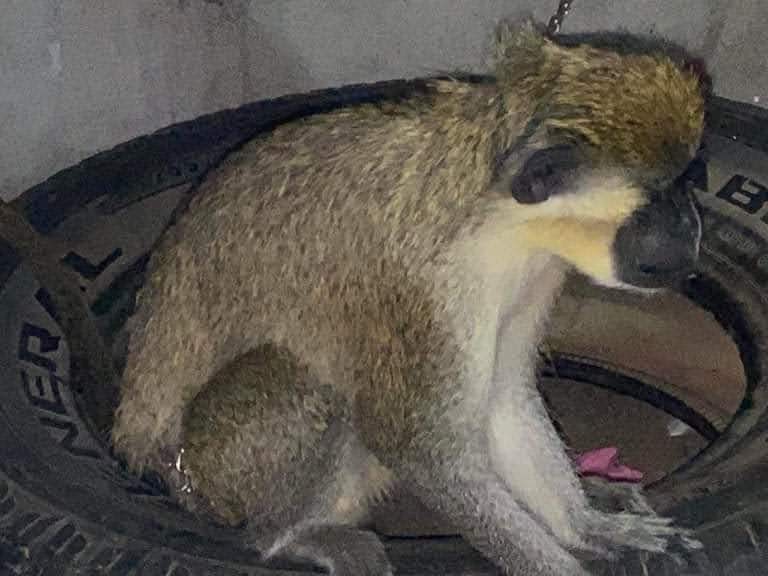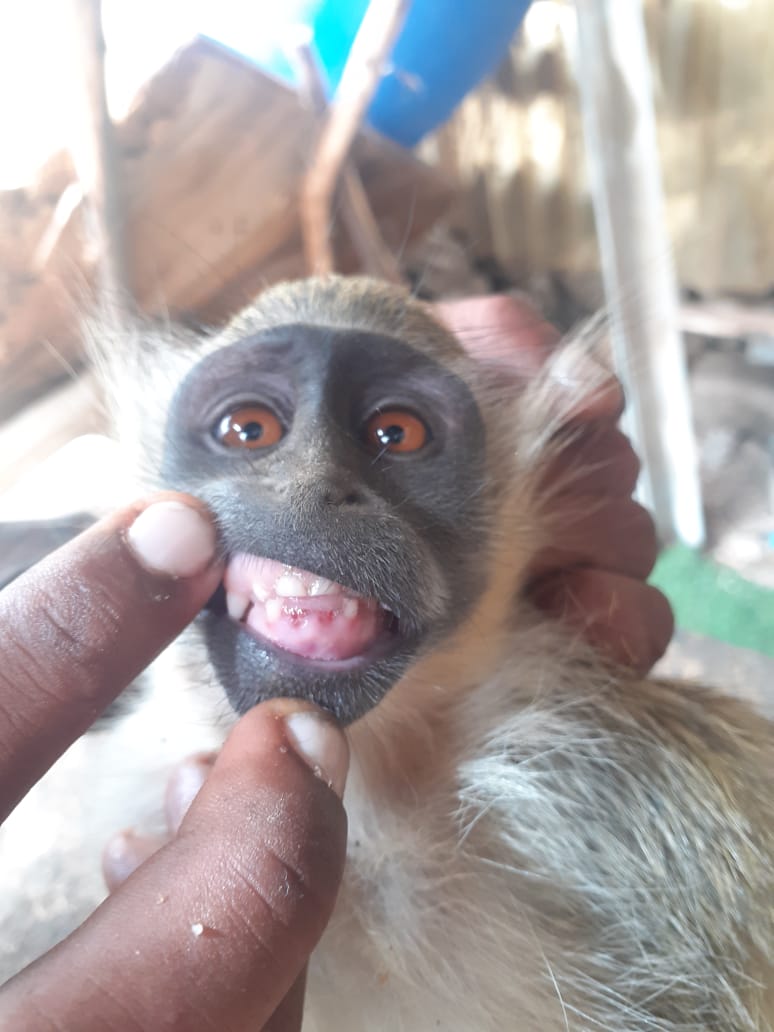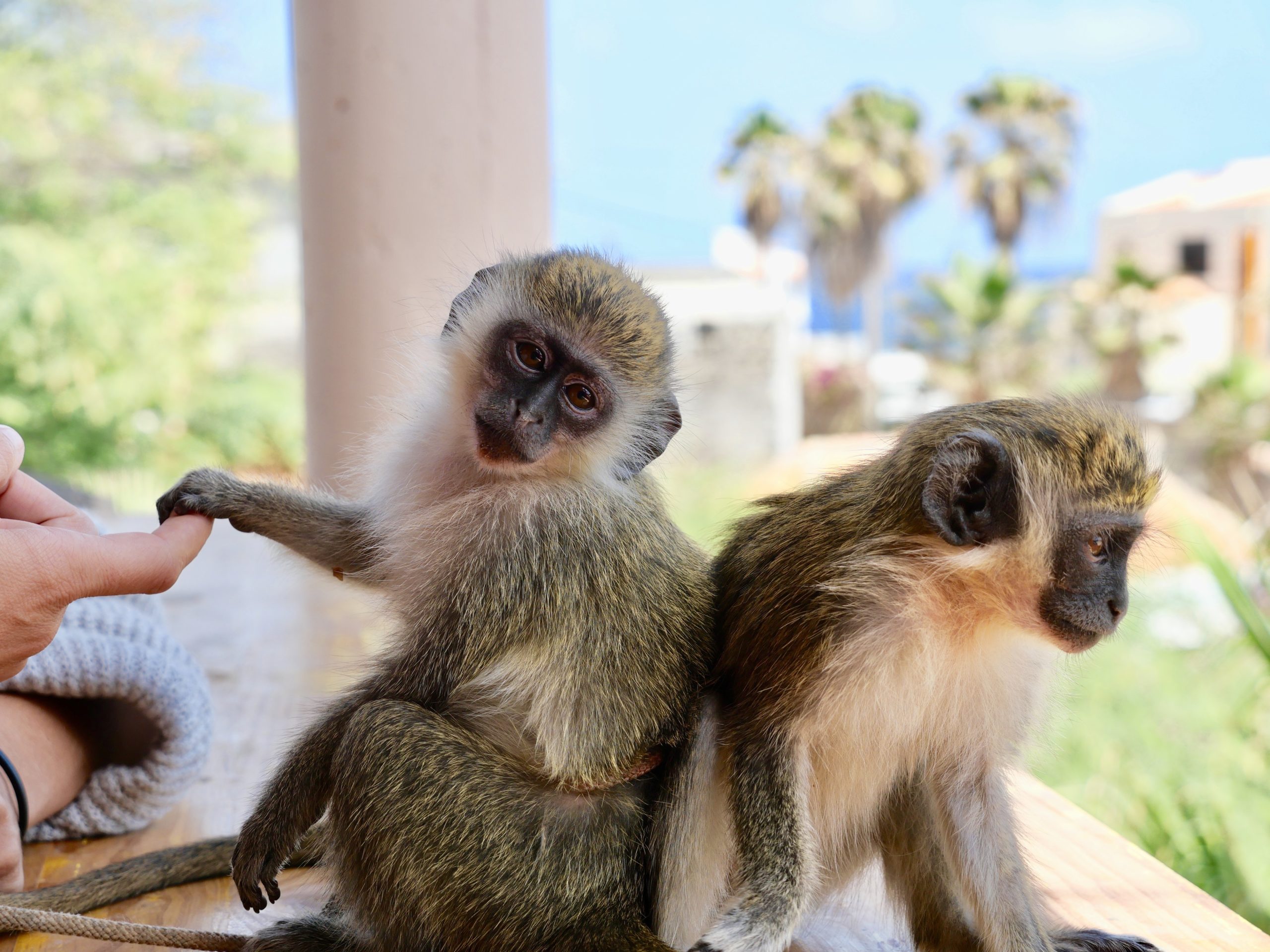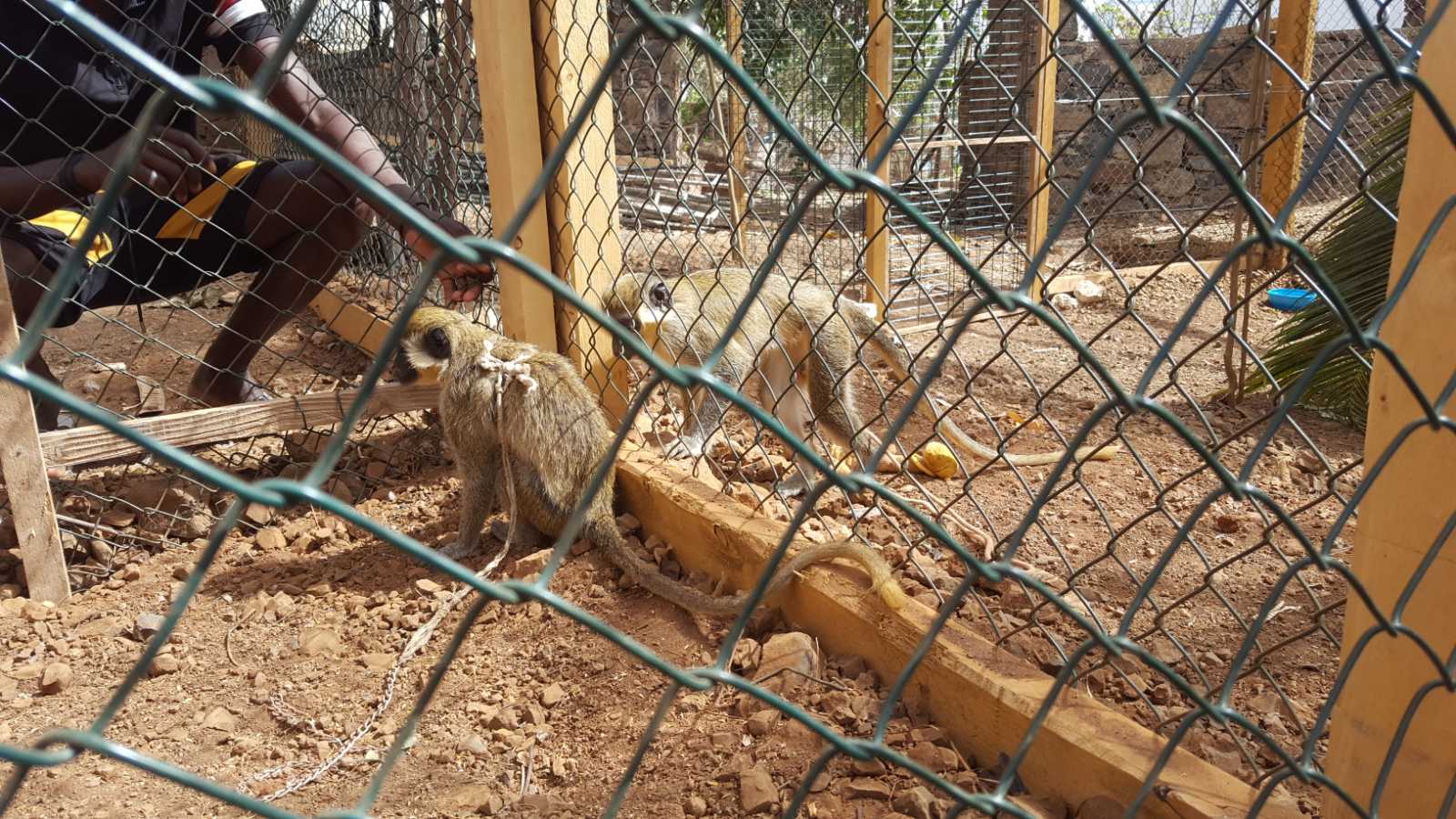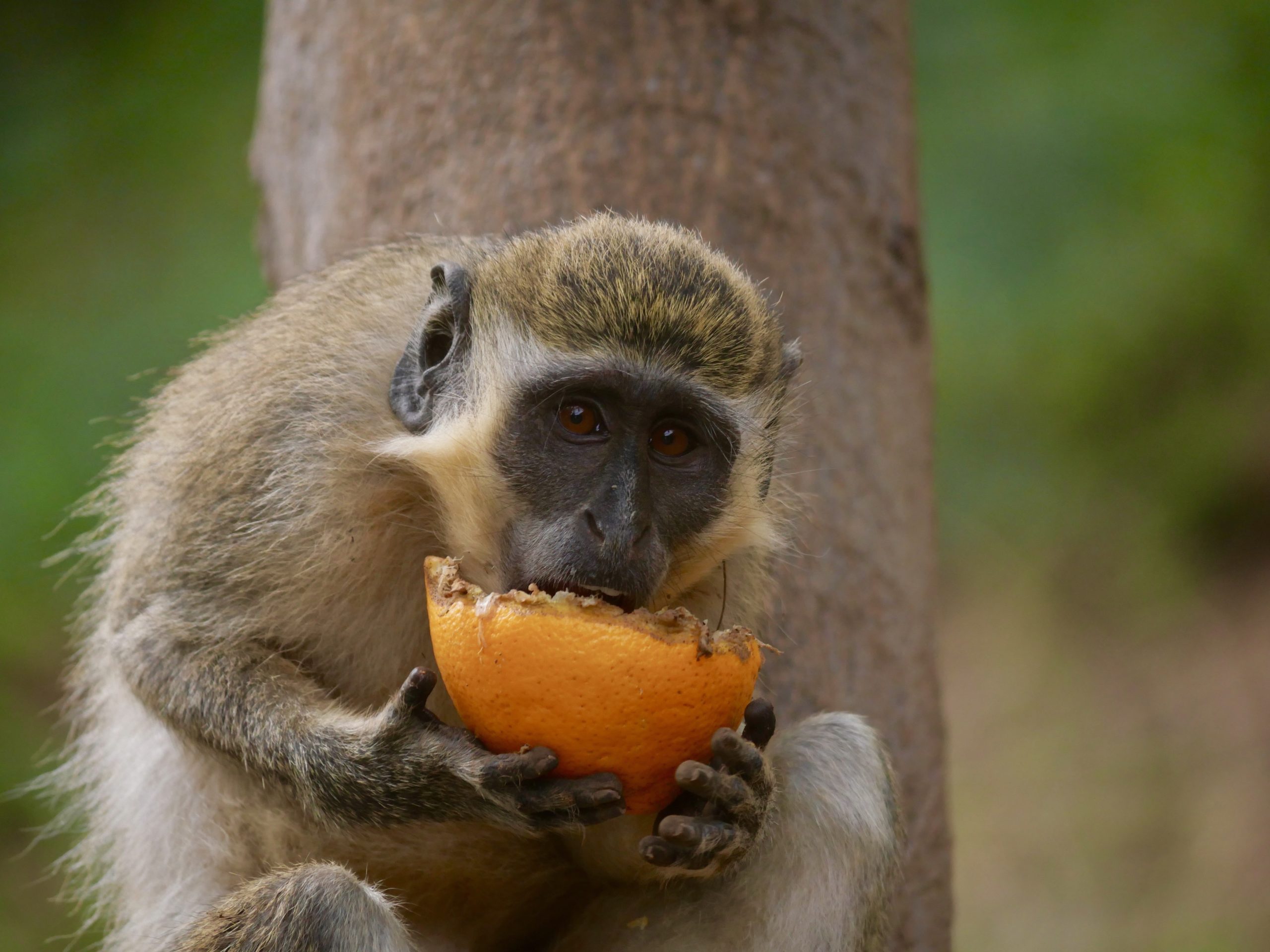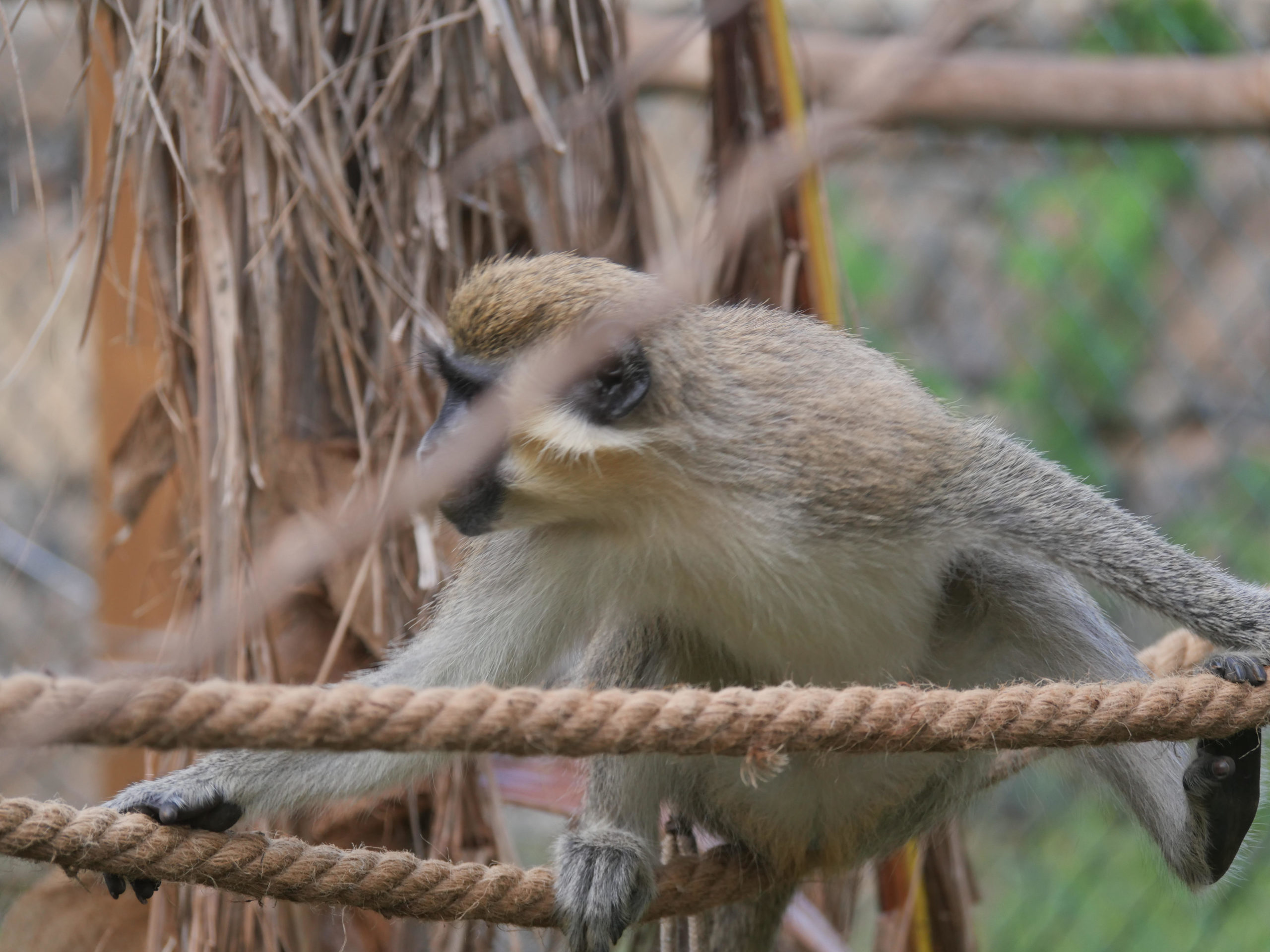THE SHELTER
The first and only refuge for green monkeys in Cape Verde
Opened in April 2021, the shelter can accommodate orphaned, injured, abandoned monkeys or those who can no longer be kept by their owners, and offers them a secure and suitable environment with adequate space.
We welcome both baby monkeys that were captured a few days ago and are generally injured, and adult monkeys that have spent several years in captivity.
The first shelter built in April 2021 has an area of 75M2 and a height of 6 meters. The refuge will eventually have 3-4 type shelters.
Several smaller shelters are intended to accommodate new arrivals who are placed under observation.
Some monkeys are in semi-freedom with a system of ropes connected to long-distance cables. This makes it easy to put monkeys in contact while being able to intervene quickly.
Ultimately, our goal is to have a capacity for 50 monkeys.
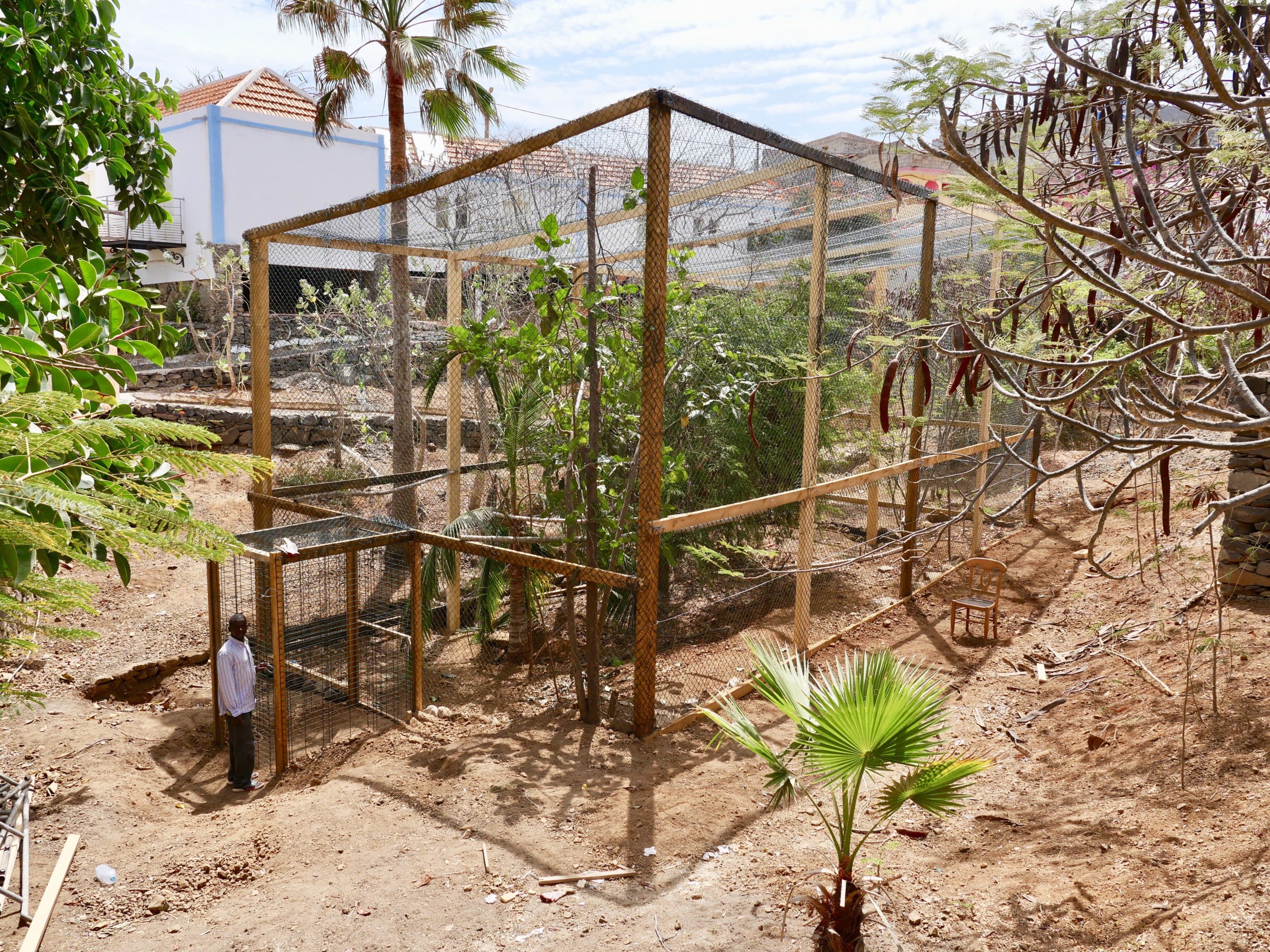
The shelter has been receiving numerous requests each month to welcome adult monkeys in captivity for several years.
The demand for sheltering adult monkeys that have been in captivity for several years is greater than we thought.
Unfortunately our capacity is currently limited, because many shelters are needed to accommodate monkeys of different ages and different behaviors.
The constitution of a group of monkeys in the same shelter, where each has it's own place, is not easy to organize and takes time.
We also receive requests from people who need to travel and leave their monkey in an appropriate place. These requests must be taken into consideration to avoid the abandonment of monkeys.
Baby monkeys received shortly after capture were terrified and often injured and require special attention

The rescued baby monkeys are initially installed in a specific space away from other monkeys to facilitate observation and to give them the necessary care.
Some of them had serious injuries. After two or three weeks, the new arrivals have recovered and are less stressed, it is then that they are gradually introduced into the groups of adult monkeys.
Contact cages are used for adult monkeys, but for baby monkeys, under the permanent observation of an animal officer, they are left free several days a week to facilitate their integration into the group of adult monkeys.
Baby monkeys never stray far from other adult monkeys.

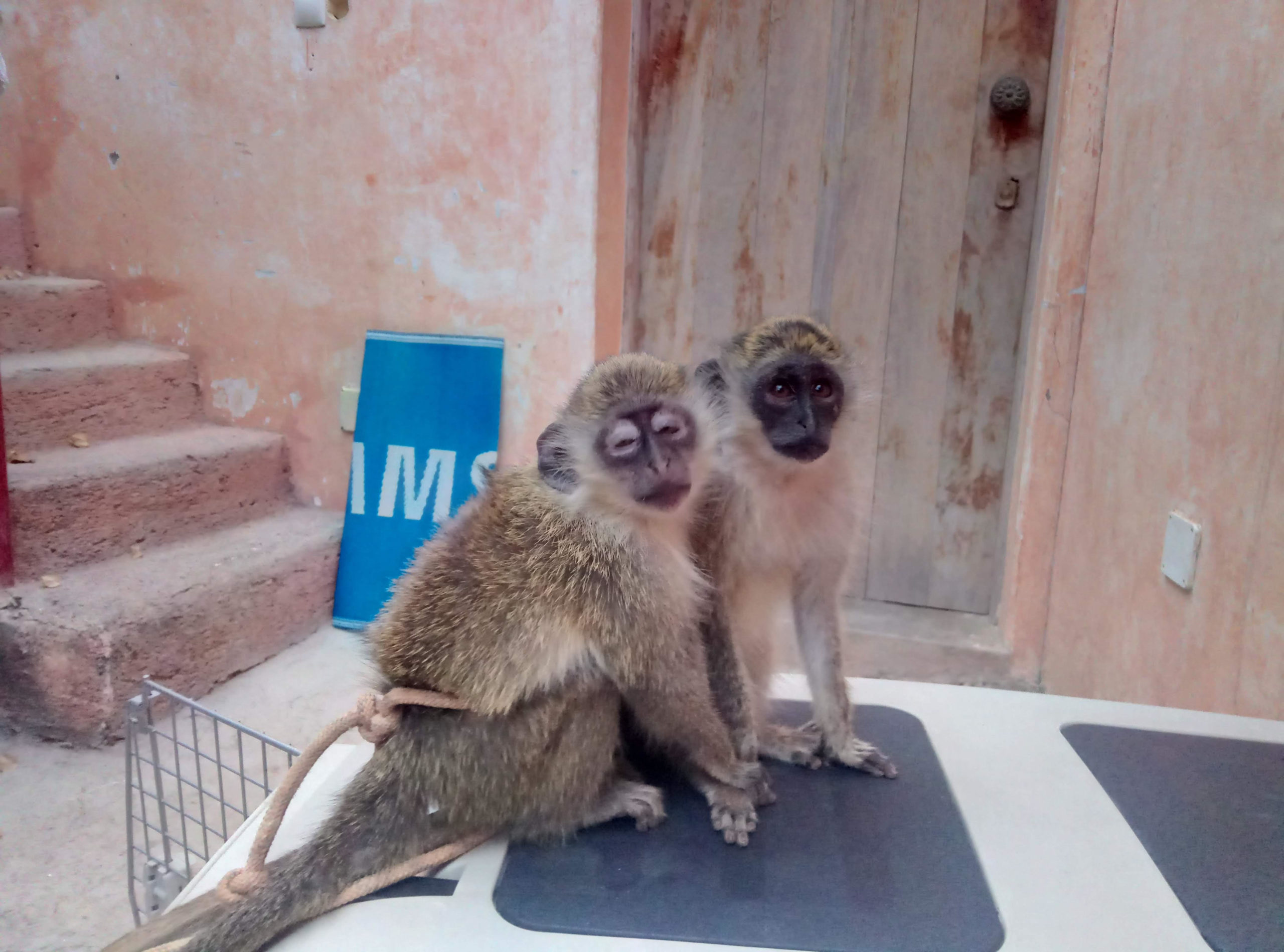
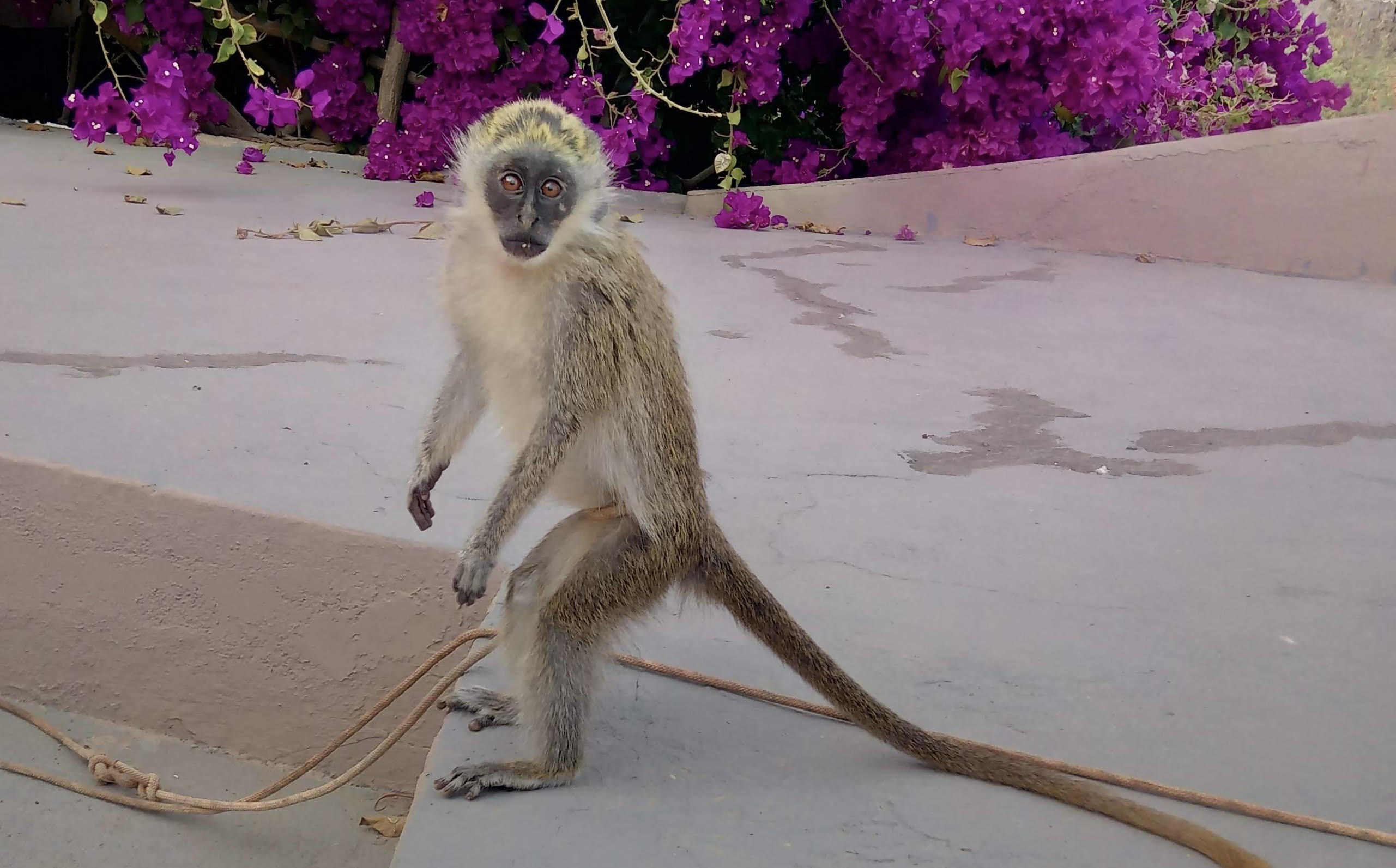
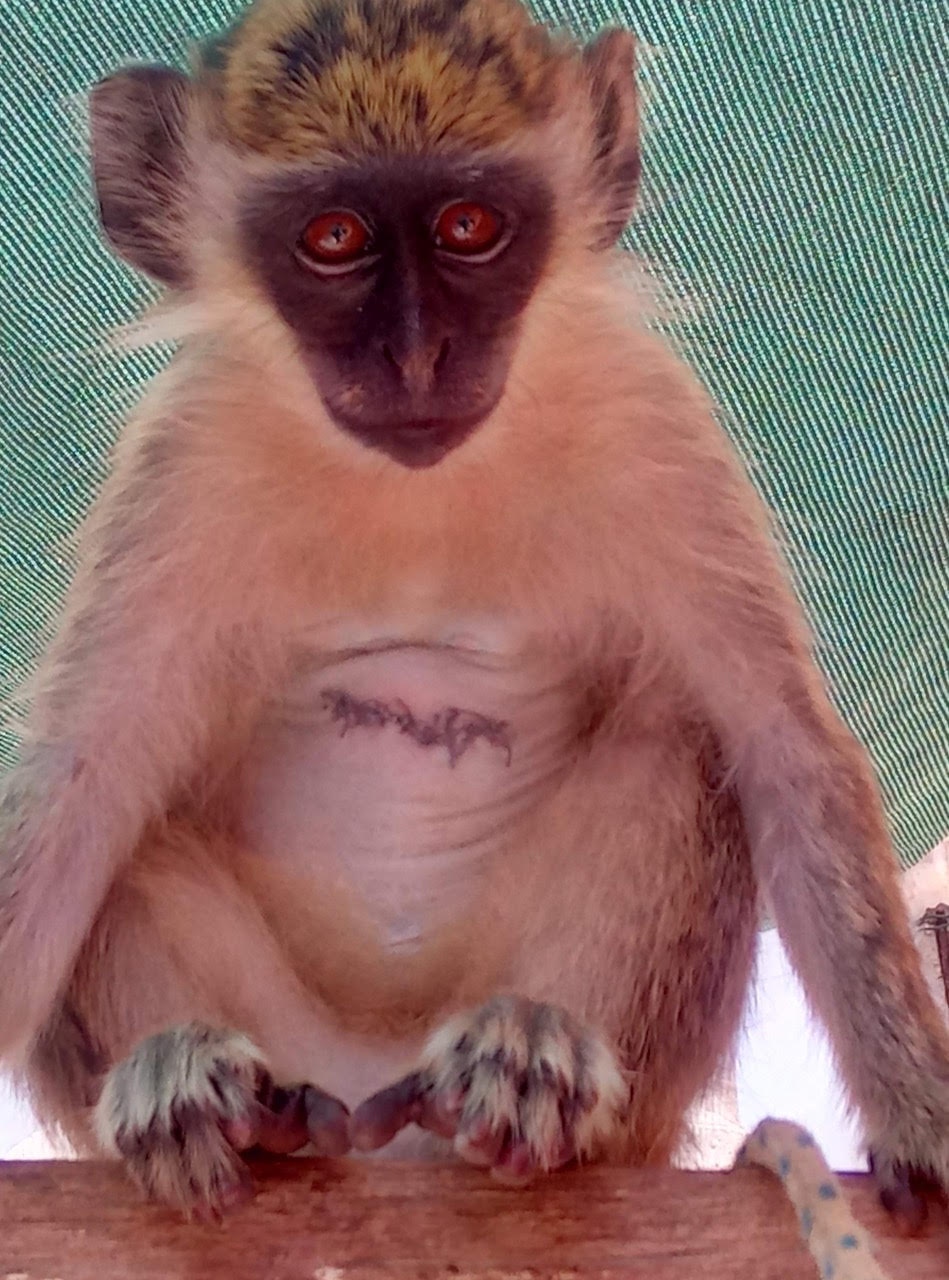
THE SHELTER'S MONKEYS
The current capacity of the refuge is limited, and the association relies on donations and various contributions, to have in the short term a permanent capacity of at least 50 monkeys.
he refuge currently permanently accommodates 7 monkeys, including 4 males and 3 females, and each monkey requires permanent attention. The shelter has two full-time animal attendants dedicated to the welfare of the monkeys.
Food is distributed three times a day:
- The morning ; distribution of fruit
- At noon: distribution of vegetables
- In the evening, before sunset fruit distribution
The first resident of the shelter. The real promoter of the project! A 9-year-old adult male monkey, with a peaceful but very protective nature. He does not hesitate to show visitors his beautiful canines and demonstrate his agility in order to show visitors that he is the leader and that he is there to protect the group.
A 6-year-old adult female, brought to the shelter by her owner. A dominant female, very gentle, and very maternal with the little monkeys who arrive at the refuge.
Simba was brought to the refuge by his priority who no longer had the possibility of offering him adequate conditions of captivity.
He is a 4 year old male, still a bit of a teenager, very playful but also very jealous. He is the most voracious of the monkeys in the refuge. He is a very sweet but also very capricious monkey.
His favorite moment is when he can tease the dogs..
A young male of 8 months, brought to the shelter by a person who recovered him after his capture, when he was only 3 months old. He learns very quickly and he already has a criminal record for food theft!
He generally prefers to play with the males of the group and he likes human children.
A female of 3 years old, at her age she already shows pretensions of domination. She is not afraid of confrontation and the other monkeys respect her.
She is very playful and shows no signs of aggression with humans.
Arrived at the shelter at the age of 6 months, in a state of shock and completely terrified, she cut her abdomen open while hiding in the thorny plants. After a light operation in a veterinary clinic, everything is back to normal. A female of almost two years old, very delicate, very clever and who gets along with all the other monkeys in the refuge.
She is very successful with males who try to win her favors.
Arrived at the shelter at the age of 6 months with a fractured left front paw. After regular care he was able to run and play again.
He is a young male of almost two years old, very endearing, very intelligent and learns very quickly. He is cunning and he has a very assertive character. It uses a wide range of cries to express satisfaction or displeasure.
He's also the champion at stealing food from other monkeys or in the kitchen...but he's also the shelter team's favorite!
INFORMATION AND AWARENESS
The refuge is also a privileged site for meeting and learning about monkeys and their role in ecosystems and the preservation of biodiversity.
The interest brought by monkeys is very favorable to a dialogue on nature and on the necessary protection of biodiversity.
We noticed that during the visits to the refuge, supervised by an animal agent, the children and the adults are eager for information on the monkeys and they have only one obsession… to touch them. The first encounter with a monkey is a defining moment for an adult and even more so for a child.
It is always a privileged moment to be able to take advantage of these precious moments to raise awareness about the animal cause and our responsibilities towards them.
Visiting the refuge helps to raise awareness among the local community and foreigners from all over the world who visit us, in order to spread the message in their own country about the biodiversity of Cape Verde and the challenges it faces.
FIGHT AGAINST ABUSE
The association claims to play an active role in the fight against the abuse of monkeys

Throughout this year we have made some interventions, still too limited, to fight against the mistreatment of monkeys, on the basis of denunciations from people, including foreign tourists in particular.
Monkeys in Cape Verde do not benefit from a good image, and the lack of knowledge about monkeys and their roles in ecosystems does not improve the situation.
According to our observations in the field, a large part of the monkeys in captivity are suffering , because, in general, very few owners of monkeys know the biological needs of this species well, and by meeting the owners we were able to very easily convince them to improve the conditions of captivity for their monkeys.
In general, two types of abuse are considered; active mistreatment, done in full awareness and often linked to acts of cruelty, and passive mistreatment often linked to a lack of knowledge of the biological needs of the animal or negligence of the owner when the animal is in captivity.
